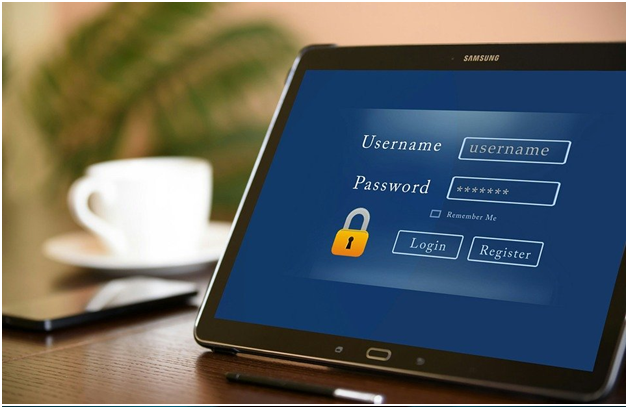Your smart home is vulnerable to cyber-attacks.
Yes, you heard that well.
Your single lightbulb could expose your Wi-Fi credentials to hackers.
Read how to cyber protect your smart devices before you become a victim of hacking today.
Undeniably, the Internet of Things devices have made our lives much simpler.
These days, you can see what’s happening around your home while you’re away. You can switch the lights on/off even when you’re on the fly.
In short, IoT devices have made what looked impossible in the past to be possible and much easier these days.
Unfortunately, most IoT devices come with little or no built-in security.
And to make the matter even worse, these devices collect and store personal information including your name, location, health records, etc.
Think about what could happen to your personal data if hackers get access to your IoT device.
Cyber Attacks Recorded in History
Take a look at some of the reported cyber attacks on IoT devices as recorded in history.
In October 2016, Dyn, a company that manages the World’s DNS infrastructure was attacked by the Mirai botnet. The attack affected most of the popular websites including CNN, Twitter, Netflix, and many others. By the end of that month, close to 100,000 IoT devices had been affected by this attack.
In February 2017, smart toys made by Spiral Toys were hacked. The attack exposed children’s personal information and close to 2.2 million voice recordings.
800,000+ users were affected and their email addresses and passwords were exposed.
As if that’s not all, in early 2019, smart cameras and thermostat belonging to some homeowner were hacked.
The homeowner lost control over his smart cameras and thermostat.
What does this mean for your IoT devices?
It’s time to strengthen the security of your smart gadgets.
And given that by 2025 we expect to have 25 billion IoT devices, we should expect cyberattacks to increase tremendously.
So, if there is time to learn how to cyber protect your IoT devices, then it’s now.
In this article, you’re going to learn a few ways to secure your smart devices.
The last thing you want to see is cybercriminals accessing data on your smart thermostat to know when you aren’t around at your home. Paying a hefty ransom to restore your smart home system after an attack on your network through one of your IoT devices isn’t a nice thing either.
So here is how to cyber protect your IoT devices.
1. Use Hard-To-Guess Passwords
This sounds a no-brainer but it is surprising to see how many cyber-attacks are reported every day due to weak passwords.
When hackers gain access to your smart devices, you’re finished.
You will sweat by the time you restore your system and it can cost you a lot of money.
To avoid this, use strong, complex, and hard-to-guess passwords to protect your smart devices and home networks.
Stronger passwords have a combination of uppercase and lowercase, numbers, and special symbols.
Also, use different passwords for different devices. Avoid saving your passwords electronically as well.
If you have too many passwords that you think you can forget, use a secure password manager.
2. Keep Your IoT Devices Updated Regularly
Every computer owner is guilty of postponing updates on their computer most of the time. Yes, it’s when you open your computer, an “Update Your System Now” notification shows up, and you quickly click the “Update Later” button.
This is easy to do for your computer but do this for your smart devices at your own peril.
As mentioned by Australian Writings, most IoT devices come with little or no built-in security. For that reason, you need to keep yours updated with the latest security patches.
Regular updates also help to clear any security vulnerabilities that could have affected the previous version. Note that hackers are aware that users are constantly safeguarding their smart devices and are coming up with new hacking ways, so the best way to keep your IoT devices cyber protected is to update them frequently.
3. Use Two-Factor Authentication
You must have used two-factor authentication when logging into your Gmail, social media, or other online accounts.
Or perhaps you have added this to your debit card.
Hackers use almost the same techniques to access your sensitive information by the way.
Therefore, always use two-factor authentication for all your smart devices.
The good thing about using this method is that you can tell whether someone tried to access your system.
Typically, two-factor authentication is a method where you will have to get further permission to gain further access to your smart devices.
For instance, you can activate this method so that when you want to access any of your smart devices, you get a code on your mobile phone that you enter before you proceed.
4. Change Default Login Credentials Immediately
Usually, your devices, the router, in particular, will come with a factory-default name and password.
The only thing hackers need is to know your router model for them to hack it. You don’t want this to happen as it will cost you a lot.
As a rule, when you buy your router, change the default settings.
Make sure you pick user names that don’t relate to your location or anything that hackers can guess.
According to the assignment writing service some people use their pet or child’s names as their user names but this can be risky.
Also, avoid using public Wi-Fi or if you have to, then avoid providing your personal information.
5. Avoid Sharing Your Network
Another way to cyber protect your IoT devices is to assign them a separate network.
In simple terms, avoid using your home or business network when accessing your smart devices.
In the event your network is attacked (assuming you’re using the same network for your smart devices and business), you’re going to suffer a huge blow because everything of yours will be exposed including your bank data, health, and business records, etc.
6. Encrypt Your Network
Use WPA2 encryption for your network instead of the outdated WPA or WEP, as suggested by Essaymama.
And if you have to use public Wi-Fi, make sure it uses strong encryption protocols.
Along with this, keep your devices updated with the latest security patches.
7. Keep Your Devices Physically Protected
In most cases, you will be accessing your IoT devices via apps installed on your mobile.
That means that in the event you lose your mobile phone, anyone who picks it may access your smart home.
You need to implement physical security so that you don’t lose any device you use to control your IoT devices.
Cyber Protect Your IoT Devices and Prevent Cybercrime
So, there you have it: 7 Ways on How to Cyber Protect Your IoT Devices.
Do you have a smart device in your home? How do you keep it protected from cybercrime?
Have you ever had a cyber attack on your IoT devices? What was your experience?
Share your thoughts with us in the comment section.






